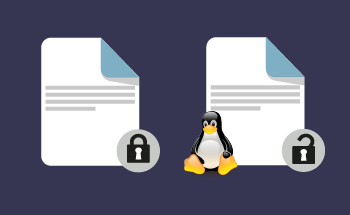Apache Spark vs. Hadoop: An In-Depth Comparison
10:12, 23.02.2024
Hadoop and Spark are the major big data infrastructure frameworks. They are used to process and store large sets of data.
Spark appeared in 2006 and immediately became really popular among various users such as soft providers, developers, and independent vendors. However, since the creation of Spark, there are always some comparison discussions of what option is better Hadoop or Spark, and why. We decided to explain the major difference between these frameworks so that you will have a better picture of what will suit your needs.
Understanding Hadoop
Hadoop is a Java framework that is used for the processing of big datasets and distributed storage. The major thing here is distribution because the quantities of the data are huge and cannot be analyzed by one computer.
With the help of this framework, it became possible to divide large collections of data into smaller parts and distribute them across nodes (incorporated machines) that create cluster. The task of big data analytics is to divide the task equally to get a higher performance level. It won’t influence the users’ experience, because all these parts will be shown as one unit.
Hadoop can function in 2 ways as a multi-node and single-node cluster. The most common one is considered to be a multi-node cluster where every node functions on an individual VM. Hundreds of units are needed to process the volumes of big data.
Due to Hadoop, users do not experience the complexities of a distributed system and have access to an abstracted API. There are a couple of components in the distributing processing, and some of them are:
- HDFS or Distributed file system. This component stores and parallelizes files across a cluster. Both unstructured and structured data of large volumes is stored across the cluster.
- YARN is an abbreviation for Yet Another Resource Negotiator. It is responsible for the coordination of app runtimes.
- Hadoop Core or Common has certain utilities and libraries that other modules depend on.
- MapReduce. This algorithm functions by processing the data in parallel so that users will have access to the needed result.
Now when you know about such functional cluster layers as YARN, MapReduce, and HDFS, let’s discuss the type of existing nodes. The first one to mention is Master one. This node coordinates and controls the 2 key functions.
The slave or worker node is responsible for the data storage and running of the computations after receiving the instructions from the master node.
Gateway/Client/Edge node functions as an interface between the outside network and the cluster. This type of node is responsible for loading the data in the cluster, explaining the processing of the data, and showing the output.
Pros and Cons of Utilizing Hadoop
Of course, as with any other framework, Hadoop has its advantages and disadvantages. There are no ideal solutions for all the users so everyone should vividly understand the pluses and minuses in order to make the right choice for the specific requirements.
Benefits of Hadoop
- Price. Hadoop is a perfect choice in case you don’t want to overpay, and who does? This open-source framework will definitely save your budget if compared with Relational databases. The trouble with Relational databases is related to the storage of huge data volumes and that is pricy. To minimize the spending, companies that used this traditional method tried to delete Raw data and that won’t give the best results. With Hadoop, users have a free framework and commodity hardware (also the cheapest possible option).
- Flexibility. Hadoop works with any sort of databricks such as unstructured (videos and pictures), structured (SQL), and semi-structured (JSON and XML). With this level of flexibility, companies can quickly analyze data from emails and social media.
- Scalability. This is a great option if you are searching for scalability. Huge volumes of information are divided into multiple machines with parallel processing. Depending on the requirements the number of these nodes can be easily lessened or increased.
- Min network traffic. The system works in such a way that every task is divided into tiny sub-tasks and only then each is assigned to the available node. Every node is responsible for processing a small portion of data and this minimizes network traffic.
- Speed. In Hadoop, huge volumes of data are divided into small databricks and they are distributed between nodes. All these databricks are processing parallelly and that drastically increases the level of performance. Speed is especially crucial in case you are working with large volumes of unstructured data.
- Tolerance to faults. Hadoop creates three copies of every block and saves them into various nodes. Due to this approach, data is always available in case one system crashes.
Drawbacks of Hadoop
- Not the best choice for small files.
- Probable issues with stability.
- Designed fully on Java.
- Poor performance in small data environments.
Understanding Spark
Apache Spark is also an open-source framework that is used for processing big data. This system works by optimizing the query execution and in-memory caching. This is done for the faster processing of data.
It is considered to be faster because Spark uses RAM and of course, such processing is quicker if compared with the disk drives. There are various purposes for using Spark such as creating data pipelines, working with streams of data and graphs, using distributed SQL, integrating information into a database, using Machine Learning algorithms, and more.
The components of Apache Spark are:
- Core of Apache Spark. This is like a base for all the other functionality or general execution engines. Core provides such functions as outputting, scheduling, inputting operations, dispatching of tasks, and more.
- Spark SQL. This is an Apache module that was specifically designed for dealing with structured data. Due to SQL, Spark gets more details about the data and the computation that has been performed.
- Machine Learning Library. This library includes a variety of algorithms such as clustering, classification, collaborative filtering, and regression. Also, there are a couple of additional tools for evaluating, constructing, and tuning pipelines. It makes it much easier to scale across the cluster.
- Spark Streaming. With the help of this element, it is possible to process real-time information. The data can be received from such sources as HDFS, Kafka, and Flume.
- GraphX. It is processing, doing exploratory analysis, and also graph computing in one system.
Advantages and Disadvantages of Spark
Let’s first start with the advantages of Apache Spark, some of them are:
- Easiness of usage. Due to a variety of high-level operators (more than 80), it is so much easier to design parallel apps.
- Speed. Apache Spark is popular among data scientists mainly because of its processing speed. If talking about processing huge volumes of data then Spark is so much faster if compared with Hadoop. Also, RAM usage is considered beneficial for the speed characteristics.
- Multilingual. There is a diversity of languages that are supported by Spark such as Scala, Python, Java, and more.
- More analytics. Except for reduce and MAP, Apache Spark also supports ML (machine learning), SQL, Streaming, Graph algorithms, and more.
- Powerful option. Lots of challenges can be easily solved because of the low latency in data processing. In addition to this, there are libraries for machine learning and graph analytics algorithms.
Disadvantages:
- Fewer algorithms.
- Consumes lots of resources of memory.
- A higher level of latency when compared with Apache fling.
- Troubles with small files.
Apache Spark vs. Hadoop
In order to visualize the major differences between Hadoop and Apache Spark, let’s review the following table:
| Characteristics | Hadoop | Spark |
| Usage | Batch processing is more efficient with Hadoop. | Apache Spark is more into dealing with real-time data. |
| Data | With MapReduce, users have access to the data processing in batch mode. | Real-time data processing means that users can get information from social media in real-time (Facebook, Twitter). |
| Security | Hadoop is considered to be really secure, because of the SLAs, LDAP, and ACLs. | Apache Spark is not as secure as Hadoop. However, there are regular changes in order to get a higher level of security. |
| Machine Learning | It is a little bit slower for processing. It occurs because of the large data fragments. | Because of MLib and in-memory processing, Apache Spark is much faster. |
| Supported languages | For MapReduce apps, it utilizes Python and Java. | For APIs, Scala, Spark SQL, Java, Python, or R is used. |
| Scalability | High scalability with Hadoop is achievable because of the possibility of adding disk storage and nodes. | The system relies on RAM so it is more challenging to scale it. |
| Used algorithm | PageRank algorithm | GraphX |
| Price | Hadoop is a more budget-friendly variant. | Because of the RAM, Spark can be considered a more pricy choice. |
| Resource management | YARN is used for resource management. | Spark uses built-in tools for this purpose. |
| Fault tolerance | This system has a high tolerance to faults. For instance, when one node fails, then the data is transferred to another. In such a way, users won’t even notice some performance issues. | Fault tolerance is achieved by the usage of a chain of transformations. In case of data loss, everything can be easily recomputed to the original. |
| Performance and speed | The processing speed may be a little slow because of the disk usage. | Because of the data storage in memory, the speed is way faster in Spark. |
Conclusion
Now you have basic information about Hadoop and Spark pluses and minuses, functionality, security characteristics, scalability, performance, price, and more. With all these characteristics of the frameworks, you should now determine what works better for your individual situation. Try to consider the architecture and objectives you want to achieve. There are no good or bad variants, there are those that suit your needs and requirements and those that do not. Don’t hurry up and make a reasonable choice of the framework whether it will be Spark or Hadoop.


